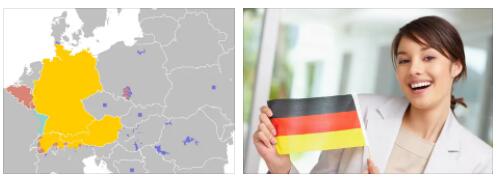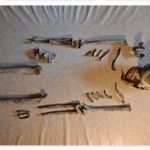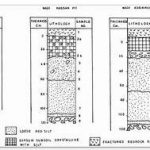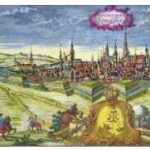The national, literary and official language of the whole of Germany, the Republic of Austria and a large part of Switzerland, also extended either as a linguistic unit or as a dialectal complex to peripheral areas and to numerous dialectal islands in alloglot lands, is German (deutsch). This adjective, derived from a Germanic noun meaning “people” (got. Thiuda, anglos. Théod, ant.-high-Ted., Diota) came to the actual meaning slowly, after being used in the religious one of gentilis “pagan”; therefore it was originally also used for other Germanic languages, not German (Anglo-Saxon). Closer to the latter than to German is the Frisian(v.). On the other hand, Dutch (v.) Is genetically part of the Low German (bt) dialectal group, which took place in a secluded literary language. The two concepts of national language and German dialect complex do not coincide; the former is more circumscribed than the latter.
The history of the German language is usually divided into three periods: Old German (altdeutsch), 6th-10th centuries; Middle German (mitteldeutsch), 11th-14th centuries, and modern German (neudeutsch). A precise distinction is of course impossible; in reality the tenth and eleventh centuries prepare the transition to the Middle German, in the fourteenth-fifteenth centuries and in the first part of the following the transition to modern German is substantially implemented. In the first period the language was formed under the influence of Latin; in the second, that of the French chivalric culture is very sensitive; in the third the literary German conquers lower Germany, reaches its internal unity with Luther, is refined in contrast with the foreign influence and reaches in the century. XVIII the current literary phase.
Old German period. – Of the four great lineages that formed the West Germanic group (see Germanics, peoples: Languages) the Frisians do not belong to the German group; the Saxons maintain their independence longer, while the Francons extend to the beginning of the century. VI their political preponderance over the representatives of the fourth lineage, the Alemanni, the Thuringians and Baiuvari. This political link led to an important linguistic innovation, which arose in the subdanubian plain, where the Baiuvari and the Alemanni merged with the Latinized non-Germanic populations, the “shift (or mutation or rotation) of the High-German consonant” (hochdeutsche Lautverschiebung), which follows the Germanic consonant shift (germanische Lautverschiebung), also extended to the Franconian domain.
It consists in the passage of the Germanic voiceless stops (p, t, k) in the initial and post-consonant position to affricate (pf, tz, kch: got. Paida, old high-German. (= Aat) pfeit “dress”; got. Tainks, aat zeichan “sign”; got. kaisar, aat cheisar “emperor”), in intervocalic position to the spirants (ff, zz, ch: got. greipan, aat grîffan “to grasp”; got. letan, aat lâzzan “to leave”; got. ik, aat ih “I”). Also the sound spirants ???, đ, ??? and they come through the voiced stops b, d, g to the deaf correspondents (got. briggan, aat pringan “to bring”; got. diups, aat tiof “deep”; got. giban, aat kepan “to give”). This mutation took place in its entirety only in ancient Bavarian. Already the East Franconian of Bamberg and Nuremberg ignores the development of b,, k and does not shift k to kch, ch ; farther NW, the Rhine and Main Franconian normally also retains the d and, in the northernmost stretch it does not develop p to pf. In the Franconian ripuario (Colonia) dat, wat, allet show that the rotation did not hit the t ; and the ??? germ. it does not evolve to p, but to v.
With the last stretches of the Old-High German consonant shift we arrive at the limit of the Middle-German and High-German territory opposite the Low-German: the southern border of the old Saxon duchy and from here a north-west line crossing Franconia., crosses the Rhine at Düsseldorf and Aachen, reaches the linguistic frontier, dialectally separates northern Germany from central-southern Germany.
It is here to observe – and this explains the prevalence of the Southern group over Low-German in the development of the national language – that, even later, the most important innovations originate from Bavaria. Here is the epicenter of the diphthongization of î, û a ei, au (mîn hûs = mein Haus ; 13th century). Southern is also the tendency to suppress the final unstressed e of the paroxitones [ Asch (e), Ruh (e), Ochs ]. Low German precedes Bavarian in the lengthening of short tics in open syllables, but keeps the short in closed syllable (schipp “ship”, dach “day”), while High German, but especially Bavarian, lengthens the short ones also in the oxytones ending in consonant and even in consonant groups (Bavarian tr ū z for the literary ” Trotz “, khöpf for K ŏ pf, etc.); literary language has intermediate conditions.
After the Franks settled in Roman Gaul, the German had his cradle at the Merovingian court. Chilperico I (died 589) introduces four signs (â, ô, th, w) to make the transcription of German words possible; national expressions are interpolated in the drafting of Franconian law (glosses of Malberg). At the court of Charlemagne the translations of the paternostrum, of the creed, of the confessional formulas begin, preceding translations and remakes of Latin sermons. With the development of the Latin religious schools begin, together with interlinear versions, (neo) Latin-German glossaries: the best known is that of Kassel, handed down by a codex of the end of the century. VIII, slightly later than the very important one falsely attributed to the monk Kero (Keronian glossary). Eginardo attests to us Charlemagne’s interest in the German national epic (Hildebrandslied);Heliand (between 820 and 840), the Liber evangeliorum of the Franconian Otfrid (Weissenburg); in the prayer book of this king the fragment of Muspilli was transcribed (103 verses on the Last Judgment). But if the center of this first German poem is at the Carolingic court, the first unofficial document, the German of the “Strasbourg oaths” (842), which should be written in the courtly language, is not Low Franconian but High German; thus, abstracting from Heliand, which is not Franconian either, the other two poems mentioned above have dialectal features that lead one to believe that not only the Carolingians did not develop a real literary language, but that they preferred the Upper German dialect to the Franconian dialect. Here the use of High German is evident. From Salic law the Latinized Franconian terms are assumed unaltered, but the German ones, introduced in the Latin text to establish juridical concepts, are adapted to the High-German phonetic conditions; the text of the “prayer of Wessobrunn” (Weissenbrun), of the century. IX, passing from lower Germany to Bavaria is accommodated to the regional dialect; likewise the fragment of the Hildebrand, transcribed in 815 by two monks from Fulda, it maintains Low-German forms in a southern redaction. The sangallese monk Notker (950-1022; v.) Who trained in the translation and commentary of Latin texts, enriched the terminology and articulated the German style, also uses southern German. Therefore, there are still only literary dialects, among which, given the cultural primacy, southern Germany ends up prevailing: a literary language is missing.
Especially in the peripheral areas, on this side of the Rhine and the Danube where contacts with the Latins were more daily and profound, the influence of the neo-Latin is felt. Very important morphological innovations extend in this way to Old German: the definite article, taken from the demonstrative pronoun, and the indefinite, taken from the numeral “one”; the perfect compound, derived from the periphrastic use of the two auxiliaries with the passive past participle; homo (man) used as an impersonal pronoun.
It is certain that the Baiuvari learned the dairy from the Latinized populations of the northern Prealps; cf. p. ex. Alm, Senne, Kaser, Käse, Molken, Schotten ; the influence of Latin agriculture manifests itself p. ex. in the loans Sichel “sickle” (from sicilis), aat chestinna “chestnut” (from castanea, castinea), aat pfruma “plum”, Lerche “larch” (from larix – icis); that of fish farming p. ex. in the bav. Säg(saiga) “net” and in German. Weiher, that of clothing p. ex. in the bav. Kolze (from calceus “boot”), Gugel (from Cuculla “cowl”); that of the kitchen p. ex. in Tiegel (from tegula “tegghia”), aat chuhma (from cucuma “cuccuma”), aat lâgella (from lagenula “small barrel”), aat labal (from labellum “trough”), aat chessî (from catinum). The wine terminology, on the other hand, is mostly derived from the Latin of the Rhine, the Meuse and the Moselle; cf. p. ex. Wein, Most, Keller, Kelter, aat impfiton (from the b. Lat. Impot) “to graft”. German religious terminology also substantially dates back to Latin. When the Latin voice did not fit, he resorted to translation (Heiland, Schöpfer, bekehren, etc.); in some cases a national voice was used with a semantic shift (Tugend carries out its meaning from “value” to “virtue” on the model of virtus). One strand is connected with the Anglo-Saxon missions: the German translation. of “Spirito Santo” der wîho âtum gives way to der heilige Geist, anglos. sé hálga gást. From the conventual Latin come the scholastic terminology (Schule, Brief, Tinte, Pergament, lesen, schreiben) and that of several ornamental plants.
According to usprivateschoolsfinder.com, two important innovations in vocalism, the development of which lasted a few centuries, lead us to the last phase of Old-High-German. The metaphony (i.e. the action carried out on the vowel by an i or j of the following syllable) takes place â to ø long, to such and, ô to ø long and or to ø, û to iu (pronounced ü long) and u to ü and, correspondingly, the diphthongs au a eu and uo a üe. It precedes in time the metaphony of a which already occurs in the first texts; where this action has not yet taken place, it acts after some time, during the Middle German period (ä); a voice imported in the century. XIII from the Polish, granica, passed in the Middle-Upper-German as gränze “border”, demonstrates the vitality of this trend. The greater antiquity of the metaphony of a corresponds to a greater territorial diffusion; conversely, most of the Upper German and Silesian dialects ignore the metaphony of u followed by ck or pf: eg, bav. drucken for drücken (germ.drukkjan), hupfen for hüpfen (germ.huppjan). The Old-High-German texts do not usually indicate the metaphony of other vowels, except for a, but internal criteria make it probable that this evolution had already progressed towards the middle of the century. X. The timbre reduction of the unstressed is of northern origin; there. at ëbano passes at the end of this period to ëbene, as beri to drink “berry”, it to esse “forge”, klagôn, through klagên, to klagen. This reduction extends slowly towards the South and has not yet reached the marginal zone of the alemanno (Tage corresponds to Taga, to hölzern gilzi, to macht machot); also the southern Carinthian retains at least l ‘ in the final (eg., Grate for gratings, Zmga. for Zange). It should be noted that both the metaphony and the reduction of the unstressed are found (albeit in different conditions) also in French.









